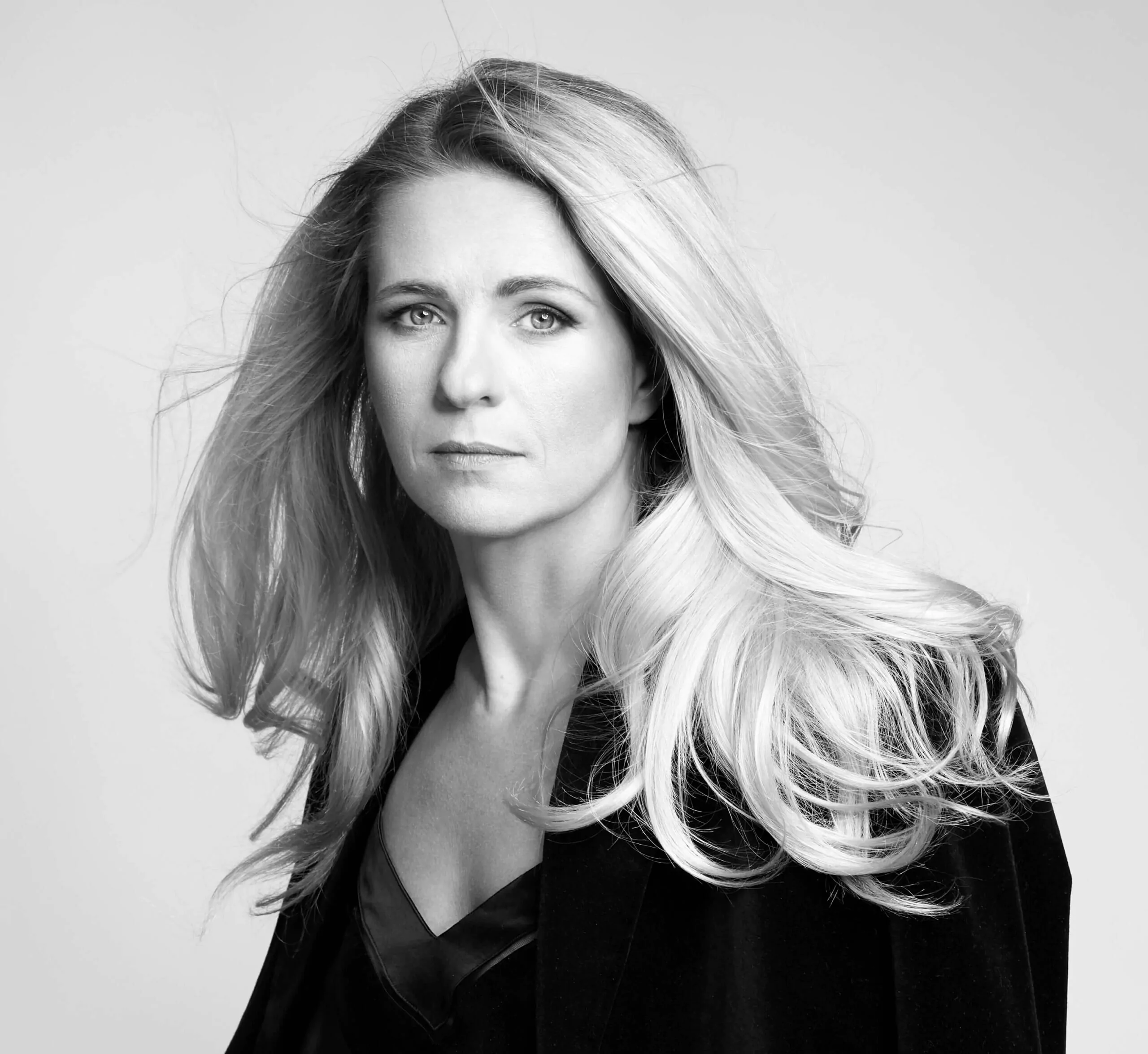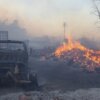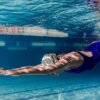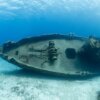Feedback, Issue 15/2024
Dzierżno Duże reservoir in agony
For the past three weeks, a difficult battle has been waged by services and volunteers against the effects of the proliferation of Prymnesium parvum, or golden alga, in the Dzierżno Duże reservoir, located near Gliwice. The fight is uneven, because the golden alga can’t be gotten rid of just like that, and dead fish need to be. The lack of systemic action in water management is reflected in this tragic situation. It seems, however, that there is a light at the end of the tunnel, although with a complete lack of understanding of the core of the problem.
One question is repeated on social media: what happened? The answer is simple, though bitter – this is not a new problem. The Dzierżno Duże reservoir has been struggling with pollution for years, but only now, with the appearance of golden algae, has the problem become visible to everyone. The massive fish die-off, this time amounting to 120 tons, reveals the scale of degradation that has actually been going on since its creation. Only this has aroused widespread anger and frustration, and even the interest of popular influencers and widely read dailies. Will this change anything, or will we continue to live from drama to drama? Emotions won’t fix anything, but only obscure the broader context that is essential to understanding the issue.
Dzierżno Duże is not a lake
Let ‘ s start with the fact that the Dzierżno Duże reservoir is an artificial creation, which means that it was built by the hand of man When in 1964. flooded the area of two pits after the end of floor sand mining, a reservoir was created, which is fed primarily by the waters of the Klodnica River. Through a culvert in the embankment, it also receives small amounts of water from the Gliwice Canal, and from the south – the Rzeczycki and Kleszczowski streams. The purpose of the reservoir is to equalize the flow in the river, improve its quality (dilution of pollutants, sedimentation), support navigation on the Gliwice Canal and function as a flood control. Originally, as it later turned out – rather hastily, it was assumed that its waters would also be used for agricultural irrigation and recreation. The depth of the reservoir reaches 20 meters in places, and its area is just over 6 km2. Dzierżno Duże is therefore one of the largest of its kind in Upper Silesia.

excerpted by: Monika Mazur
A chronicle of the degradation of the water reservoir
In fact, it can be said that Dzierżno Duże has always been in bad shape. Already in the 1970s. i 80. The last century the reservoir was treated as a receiver of sewage. I don’t have to remind you that the standards for discharging wastewater into the waterways nobody cared about in those years, the industrial machine had to turn. A large pig farm operating nearby at the time, surface runoff from agricultural areas and mine water discharged into it – along with the waters of the Klodnica River – effectively made it impossible to use the waters of Dzierżno for purposes other than recreational fishing.
It is also worth mentioning that a reservoir is a place where sediments accumulate. In the case of Dzierżno Duży, such highlights as toxic heavy metals, PAHs, methane and hydrogen sulfide can be found in them. In simple terms, the reservoir is heavily polluted and highly zeutrophic, which promotes toxic algal blooms.
Dzierżno Duże – current situation
There is no natural body of water, or lake, in the Upper Silesian conurbation area. Although I realize that the colloquial names of artificial reservoirs can be misleading, such as Lake Paprocany in Tychy or Lake Chechlo-Nakło in Świerklaniec. The flooded areas are mostly characterized by poor water quality. Their anthropogenic origin and the influx of pollution from heavily urbanized areas have done their part. Which does not change the fact that in Silesia we spend our time precisely at such reservoirs and humanly we love these places, and we have no shortage of enthusiasts of active recreation with a fishing rod. This caused whoever could, in the face of disaster, to rush to the rescue. Since early August, when the first dead fish were spotted, the battle to save what could still be saved has been ongoing. In addition to the services, including the army, volunteers – primarily anglers, local residents and environmentalists – have been working up a sweat on the reservoir. Some are saving the fish that are still alive, others are cleaning the reservoir of dead specimens. Everyone is asking themselves – what led to this tragedy? And there is no shortage of conspiracy theories and various others.
What does the state service say about this?
They are conducting experiments. First, to get rid of the golden alga here and now, and second, to determine which method is most effective and can be a backup in emergency situations – when this invasive species multiplies and a quick response is needed. So two groups of scientists and officials came together, each conducting their own experiment in recent weeks. The first, on the Klodnica River, involved dosing peroxidized water (perhydrol). The tests were conducted at the junction of the Gliwice Canal and the Klodnica River, at the level of the small hydroelectric power plant in Pławniowice. The tests showed the effectiveness of the method at 90-99.9 percent. reduction of golden algae. The aim of the measure was to stop the algae before it enters the Oder River.
The second experiment involved testing the SinStop preparation, first under laboratory conditions and then on the Gliwice Canal, in the area of Slawecice and Rudziniec locks. After just three days of using the preparation under operational conditions, the number of Prymnesium parvum cells decreased by 92 percent. compared to the control sample. We wrote more about this experiment in this week’ s news.
That is, it can be summed up – success was achieved. On the lips of many presses a rather unpleasant saying – the operation was successful, but the patient died. In the case of the Dzierżno Large reservoir, unfortunately, yes, but in any other case, when dealing with the proliferation of golden algae, the above-described methods can give hope for rescue in emergency situations. Which does not change the fact that such action cannot replace the necessary systemic changes and cannot be a corrective measure for the state of Polish rivers.
Where to look for the causes of the disaster?
Decades of accumulation of pollutants in the sediments of the Dzierżno Duże reservoir, the supply of nutrients and the quality of discharges of various wastewater into the Klodnica River, including mine wastewater, allows for a wide range of searches and the attribution of this environmental damage to new suspects every now and then. Are we facing a situation where everyone is to blame and the truth is becoming elusive? Is it the golden alga at fault, or all the factors a bit at a time, or perhaps one more? Prof. Prymnesium parvum wrote about what Prymnesium parvum can do for us. Agnieszka Kolada in one of her articles. I also recommend the substantive Facebook posts of Dr. Eng. Luke Weber, who took part in the first mentioned experiment. There you will find information about toxins, gas disease and other factors that may have influenced the death of fish in Dzierno. Scientific publications about anthropogenic pollution of the reservoir can also be found quite a lot – it has been the subject of research for several decades. So – regardless of the amount of algae in the water or the additional supply of some substance – the state of the Dzierżno Duże reservoir was deplorable, so all it took was the proverbial spark for the problem to ignite.
Ideas to avoid more drama?
Hmm… And here begins a whole palette of ideas better, worse and those that are better not to be uttered or, unfortunately, written down. As I mentioned, despite the successes of Polish scientists in combating golden algae, the method they have developed cannot be adopted as a systemic solution. It is not a way that will bring relief to Polish rivers and reservoirs in the long term. It is therefore necessary to act at the source of the problem, that is, to reduce the flow of pollution, including to the Dzierżno Duże reservoir. And this is where the ideas for action come in, after reading which I fainted. I will cite only two, the most spectacular, so as not to bore you.
– abolish the mines
A common, repeated request on social media is to decommissioning of mines. If such measures had been taken in advance, there would have been no blooms of golden algae , because the mines would not discharge into the Klodnica River.
Well, I shudder at the very thought of such an idea and my hands are sweating, probably like most Silesians. That’s why it’s worth writing again: decommissioning mines does not mean an end to pumping saline water out of them. You can read about the consequences of the liquidation of such facilities in a previous issue of our newspaper. Mines in Silesia are a system of interconnected vessels, and failure to protect those that are closed and those that are still in operation would mean enormous damage in the form of subsidence, sinkholes or flooding of the areas of Silesian cities. To prevent this from happening, the Mine Restructuring Company (SRK) was established in Bytom, which annually pumps out approx. 91 millionm3 of water , of which only 3 percent. is sold, and the remaining amount goes into surface watercourses in Silesia!
Returning to the case of the Klodnica River – the main watercourse feeding the Dzierżno Duże reservoir – I recommend listening to the recording of the Gierałtowice Municipality Council meeting from a month ago [1]. We learn from it, from SRK representatives, that the So¶nica Mine is to be decommissioned by 2029. and – here’s a surprise for some – transformed into a central pumping station for the region (the Makoszowy and Gliwice pumping stations will be decommissioned). The question immediately arises: will this change anything for Klodnica waters? But no. Instead of two discharges, 350 meters apart, there will be one – the amount of water from the dewatering, then already three mines, will remain the same, that is, a total of 5.5 to 6m3 per minute (some 8,000m3 per day). There are plans to build an additional retention reservoir with a capacity of 135,000 m3 at So¶nica – this is SRK ‘ s answer to the question of what will happen when Klodnica overflows….
– desalinate the Oder
I can already hear voices saying that since the topic of mine closures comes from emotional social media posts, it is worth approaching it with detachment. Perhaps that’s why, when I found out what title appeared in the paper edition of Gazeta Wyborcza (dated August 20, 2024), my interest was piqued.
There is no life in Dzierżno – an article with such a title was committed by editor Przemyslaw Jedlecki. On page 6 of the daily we read: The climate ministry announces that a comprehensive plan for the construction of desalination plants will be developed later this year, and the first river whose waters would be treated is the Oder River. I read the passage, rubbed my eyes in amazement and read again. I came to the conclusion, perhaps wrongly, that the statement of the ministry’s representative was so vague that the author of the article himself made such a conclusion. And how is the average reader supposed to understand it? Well, he will understand literally. If this clever plan were put into practice, we would be the first country in the world to desalinate a river’s waters to improve its ecological state. A river is a living ecosystem (you can learn more from Water Creatures), we won’t put a strainer on it, we won’t take desalination water in one place to continue releasing clean water. Methods to desalinate mine water or ways to use it in other ways are very necessary for us, but we need to treat this water on site, before putting it into the ecosystem. Therefore, it should be the responsibility of the mining companies to solve the problem, and preferably not with our money.

From my perspective
I always look at resource management very broadly, from narrow specialties there are hydrobiologists, limnologists, hydrogeologists, ecologists… Each of these experts should bring their knowledge and experience so that what will be planned to save Polish rivers, lakes, reservoirs and the Baltic Sea will be comprehensive. Unfortunately, we are not taught in school, or at least not in my time, that this is a system of interconnected vessels, and that if we want to develop a business, spend a vacation by clean water or drink tap water without fear, we cannot look at an issue at random. Even with good intentions – by eliminating one problem, we can cause another.
In my opinion, this is a huge challenge for all of us, not only for state services or local governments, which should show exceptional transparency in dealing with such a situation. Above all, it is necessary to build our awareness of water management. I do not urge heroic deeds, but rather to reflect and gradually learn what is happening around us, including in the context of water.
Epilogue, August 16, 2024, on the shore of Dzierżno Duże reservoir
Today it is terribly hot. Dead fish bodies are decomposing in the polluted water, you can smell a terrible stench. I look at one of the anglers – he is standing still and looking into the water, looking tired. My eyes burn horribly in these conditions. Only after a moment do I realize why – I am crying. He seems to be crying too…

 Polski
Polski







